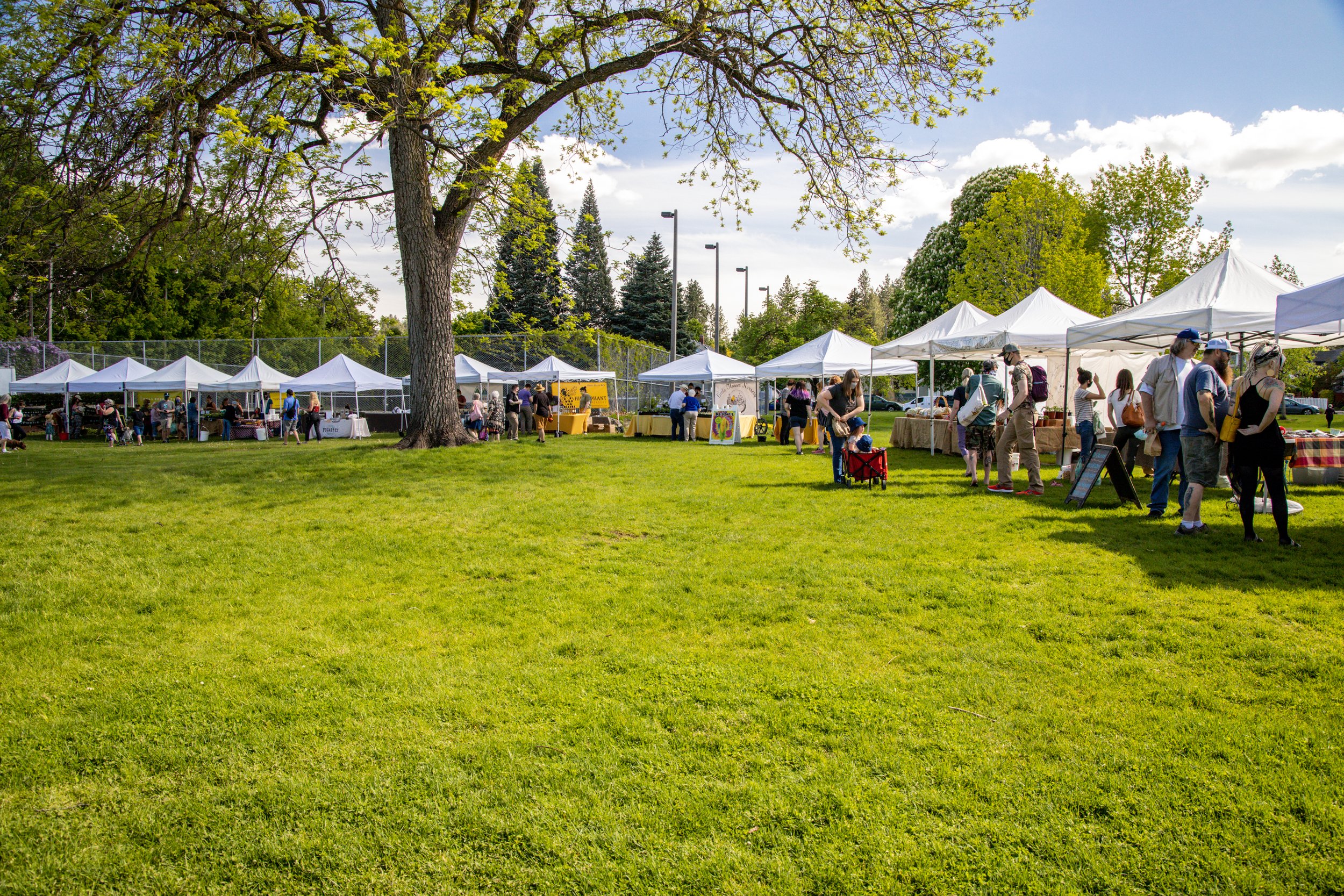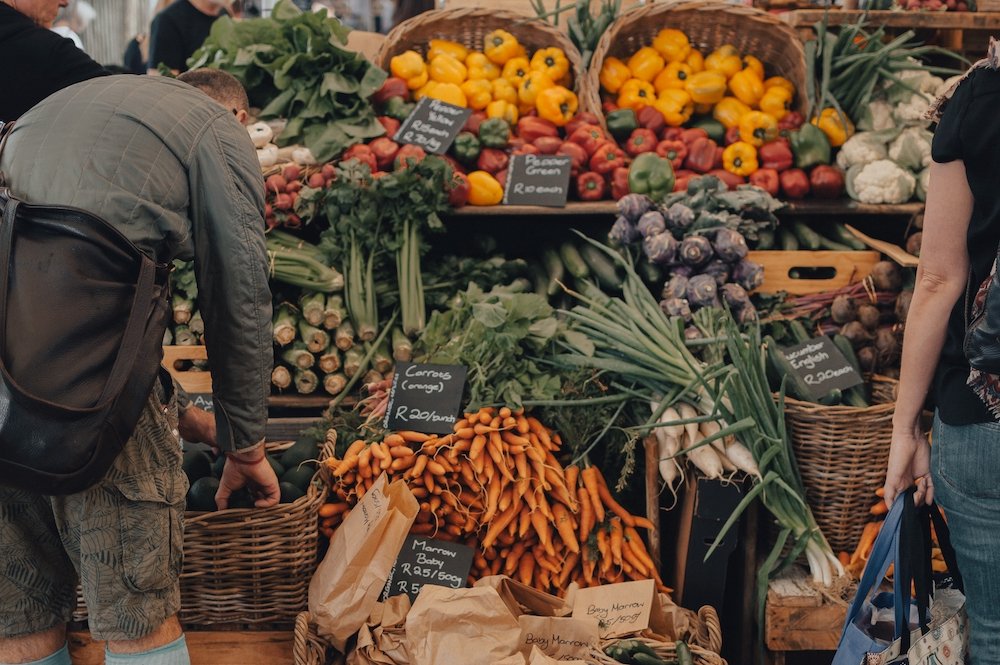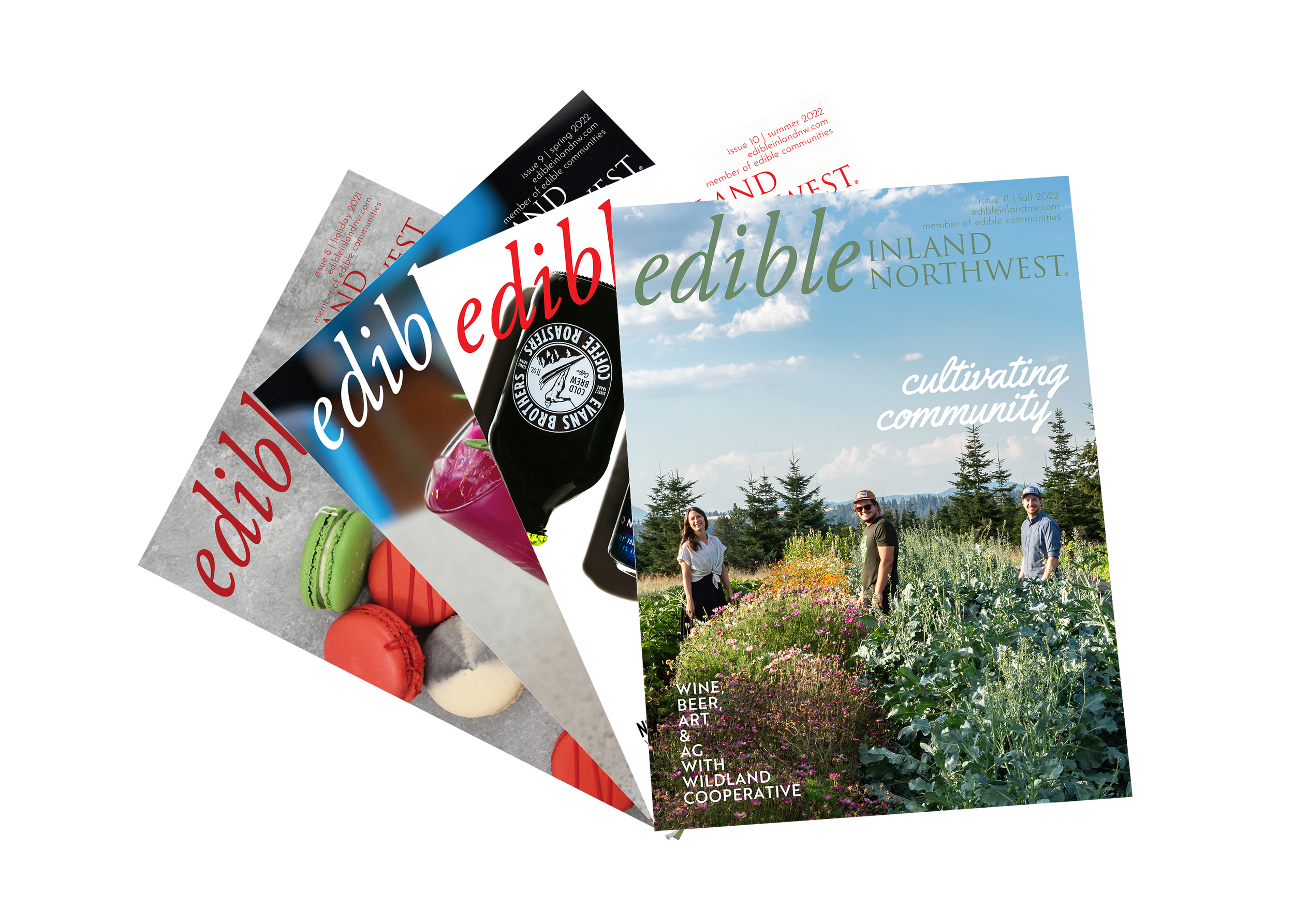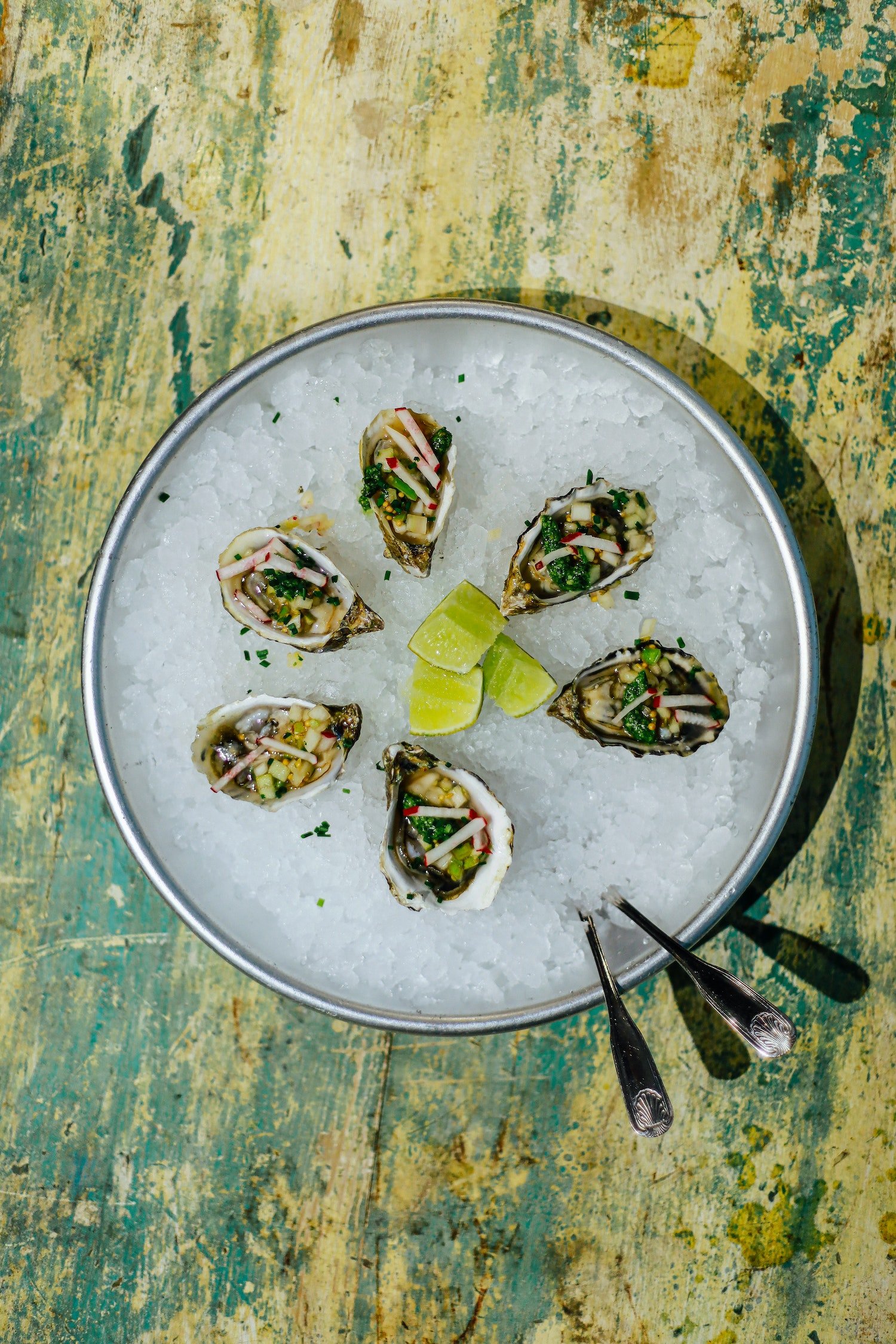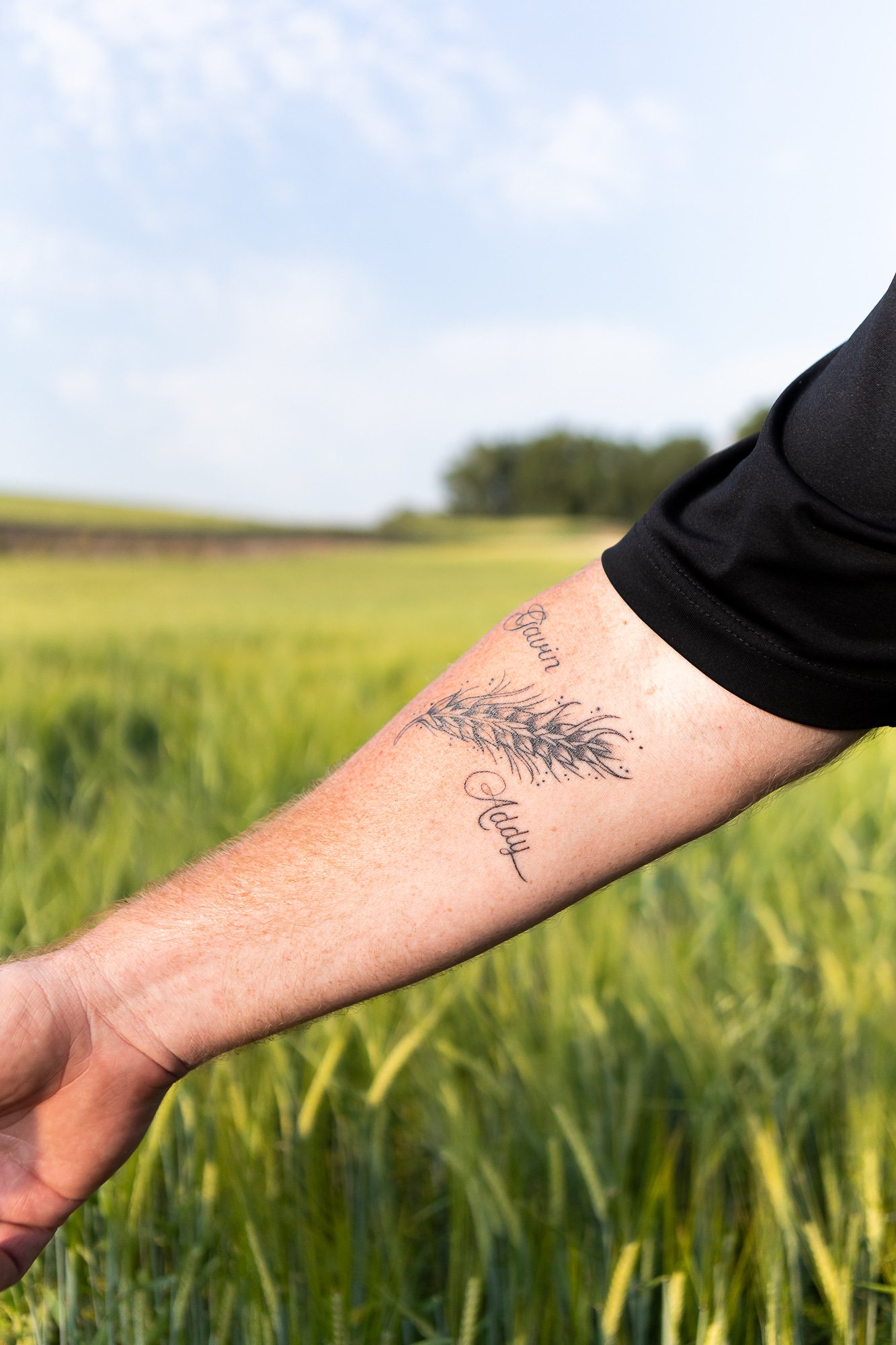To Market, To Market
To Market, To Market
BY CARA STRICKLANDI made my way to the Perry District one Thursday afternoon, heart fluttering. I’d been a food writer for years at that point, but this was all before the pandemic forced me to cook at home more than I ever had in my life, making it second nature to chop an onion and stir up a quick pan sauce. I was nervous, worried I would be out of my depth. I was far more at home making reservations than a risotto.
It was early in the farmer’s market season, and there were fewer vendors that week. I’d chosen a quiet time, near opening, and less people clustered around the vegetables and coolers. At first, I approached each stall cautiously, scanning everything in silence. I recognized quite a few offerings, but I wasn’t sure what I was looking at when I first saw the garlic scapes, and some heirloom varieties of radishes threw me off a bit. I bought a perfect head of butter lettuce, some Easter egg radishes, shyly, making the bare minimum of conversation.
But the next week, I came back.
Until this point, I’d bought the majority of my food in grocery stores and restaurants, having only the most superficial brushes with farmers and producers. Being so close to the ground that my food grew in or grazed on and not taking advantage of that proximity nagged at me. Plus, I knew that there was so much more variety to be found outside the narrow aisles of a traditional grocery store. The more I was learning about biodiversity, the more important it seemed to seek it out and spend my money to help keep it alive.
After my first scouting trip, I came back slightly more prepared. This time I had a basket to carry my edible treasures, and a map of the lay of the land in my mind.
“So what do I do with these?” I asked the woman selling garlic scapes.
She smiled. “They have a sort of garlicky-oniony flavor,” she said. “You can chop them and put them into scrambled eggs, or blitz them into your pesto.”
I added some to my basket. My scrambled eggs had a little extra zip that week.
As the weeks wore on, I grew more comfortable talking to the vendors. Soon, Eileen from Ramstead Ranch was giving me advice on making bone broth, and I was stepping up to the newly expanded tents without batting an eye, eager to learn more about a variety of eggplant I’d never seen before, or seeking advice on which cucumber would be best for salads. I developed a routine, never missing whatever was new at Hierophant Meadery or Twilight Ciderworks. When the berries and stone fruit began to arrive, along with boxes of huge, shining tomatoes, I knew just what to do with them.
By early fall, I was ready to buy some black currants and steep them in vodka, making my own sort-of creme de cassis. I exclaimed over the wide variety of garlic, surprised to learn that there was so much more than the small white bulbs I’d always bought in the produce section. I bought several flavors, reading the brown paper bags carefully before selecting the best one for salsa, or to cook a scampi with.
Most of the people setting up shop at the market are delighted to have someone who is interested in what they do. The passion they have for their work spills over into the conversations around their little tents. They are happy to talk about how to cook (or not cook) something, to bring out the flavor the way it was intended to be experienced.
Nothing against your average grocery store—I’m grateful to have so many options in one place, something that would baffle my ancestors—but going to the farmer’s market has brought me so much closer to the natural world. I’m aware of the seasons in a way that I never was when I blindly bought zucchini all year. I know what it’s like to wait patiently for those first perfect blueberries, and to jump on the rhubarb before it’s gone. I can taste the difference when produce is in season.
Beyond the food education, which has led to an invaluable cooking education, I feel a greater connection to the people who produce my food, not so far from where I cook it in my little galley kitchen. When I put a pork roast in the crock pot, I refer to a recipe in my email from someone who raised that pig. When I make a pesto, I think about the basics I learned at the market, back when pesto seemed way too complicated for me to make from scratch.
Still, perhaps the most important lesson I’ve learned is one that chefs I’ve interviewed have been saying since my career began (and long before). If the ingredients are good enough, you don’t need much to make them sing. I can bring home a perfect tomato, a peach at the height of summer, a head of lettuce that looks like a rose about to bloom. All it needs is a hint of salt or pepper, a splash of lemon, if that. When grown with care and skill, it doesn’t take much to set it off. Each bite is delicious, a taste of where it’s from.
For more information about local farmers markets near you,
check out the Edible Inland Northwest Farmers Market Guide.


